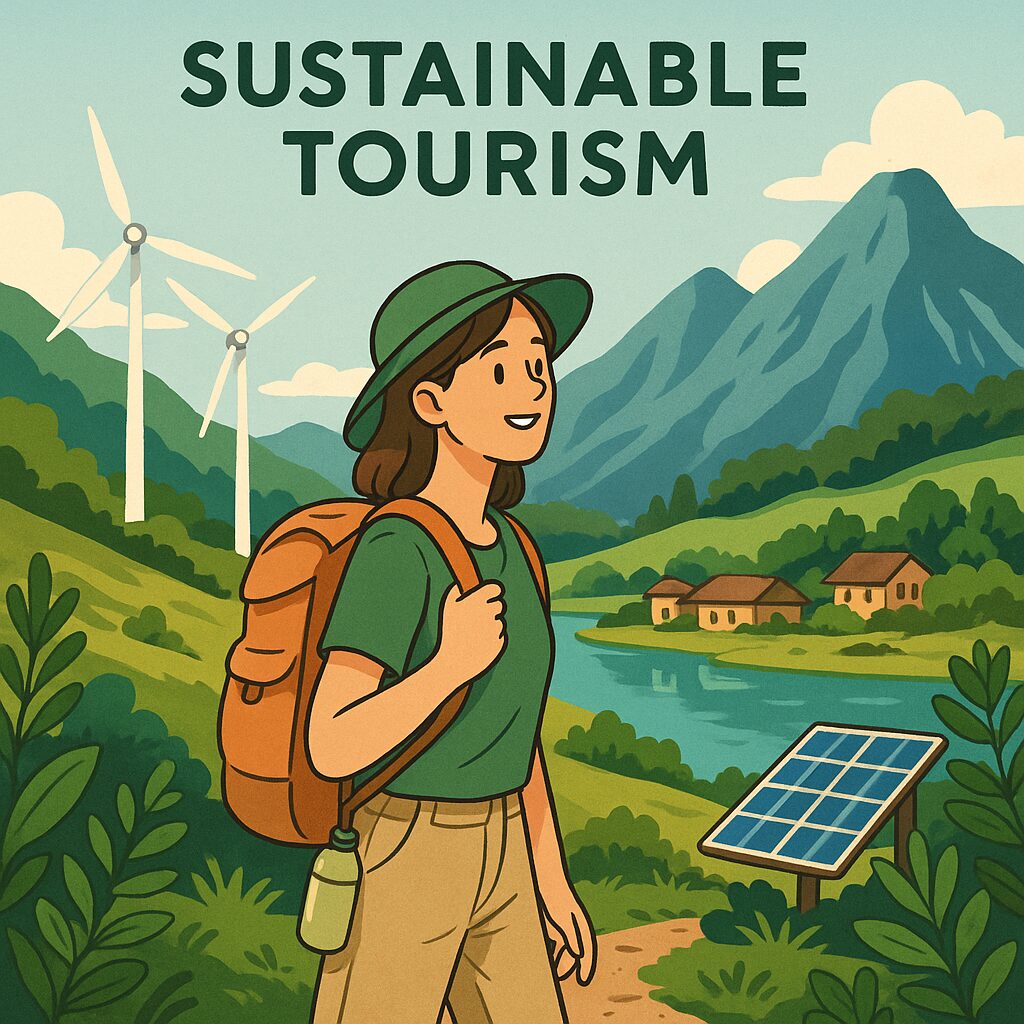
In Japan: Local Roots and Eco Innovation
Japan has embraced sustainable tourism through both traditional values and modern innovations. The small town of Kamikatsu in Tokushima, for instance, is known for its zero-waste policy — a community-driven effort to recycle nearly 100% of its waste. It has since become a model for sustainable rural tourism, attracting visitors eager to learn about low-impact living.
Other regions like Nagano and Hokkaido are promoting eco-friendly accommodations, farm stays, and forest therapy programs that align with the concept of wellness and environmental harmony. These experiences are not only peaceful but also culturally enriching.
Global Examples: Innovation Across Continents
Costa Rica is perhaps the gold standard of sustainable tourism, with over 25% of its land protected in national parks and reserves. The country invests heavily in ecotourism infrastructure, from canopy tours to biodiversity-friendly resorts.
In Europe, Slovenia has been consistently ranked among the world’s greenest destinations. Its capital Ljubljana is almost car-free, and the country’s “Green Scheme” certifies sustainable travel providers.
Africa is also making strides — countries like Botswana focus on low-impact, high-value tourism where visitor numbers are limited to protect wildlife and local culture. These models prove that sustainability doesn’t mean sacrificing quality — it often enhances it.
What Travelers and Tour Operators Can Do
A Simple Checklist for Travelers
- Choose eco-certified accommodations (e.g., Green Key, EarthCheck)
- Pack light to reduce fuel consumption on flights
- Avoid single-use plastics and bring your own reusable bottle and bag
- Support local businesses instead of international chains
- Respect local customs and environments by following posted guidelines
Even small actions add up. Conscious choices made by thousands of travelers can significantly reduce tourism’s overall impact.
How to Choose Sustainable Tours
Look for tours that mention these indicators:
- Local guides and ownership
- Clear environmental policies
- Community involvement and fair wages
- Carbon offset options for transportation
- Transparency about operations and impact
Websites like Responsible Travel and Ecotourism.org offer listings and certifications to help you make informed choices. Sustainable travel isn’t about being perfect — it’s about making better decisions when possible.
The Future of Sustainable Tourism
Tech Meets Travel: The Next Wave
In 2025 and beyond, technology will play a key role in pushing sustainable tourism further. AI-powered itinerary planners now help travelers minimize their carbon footprint. Apps like GreenTripper calculate the CO₂ impact of your trip and suggest offset options. Augmented reality (AR) is also being used to enhance virtual travel experiences — reducing the need for physical presence while still offering cultural insight.
Additionally, blockchain is being explored for transparency in tourism — ensuring that claims of sustainability are verifiable and not just greenwashing. These innovations are changing how we travel, making responsibility more accessible and engaging.
Toward 2030: Challenges and Opportunities
While momentum is growing, challenges remain. Greenwashing, lack of consistent global standards, and infrastructure gaps in some regions hinder progress. Many destinations still struggle to balance growth with preservation, especially as tourism rebounds post-COVID.
However, the global commitment to the United Nations Sustainable Development Goals (SDGs) by 2030 provides a strong framework. Travel companies, governments, and individuals have clear targets — from climate action to reducing inequalities — that align closely with the ethos of sustainable tourism.
The opportunity now is to turn travel into a force for good — one that uplifts communities, protects the planet, and offers travelers a more meaningful connection to the world.
Conclusion: Why Sustainable Travel Matters More Than Ever
Key Takeaways
As we’ve explored, sustainable tourism is more than just a 2025 trend — it’s a meaningful movement that’s reshaping how we see and experience the world. From supporting local communities to preserving natural habitats, the benefits are wide-ranging and deeply impactful.
Sustainable travel doesn’t require radical change. It starts with small, conscious choices: where you stay, how you get there, who you support, and how you engage with the places you visit.
Call to Action: Your Journey Starts Here
Ready to be part of the change?
The next time you plan a trip, consider how your adventure can leave a positive mark. Look for eco-certified stays, explore slower travel options, and immerse yourself respectfully in local cultures. By doing so, you’ll not only enjoy a richer experience — you’ll help ensure that future generations can do the same.
🌍 Travel well. Travel kind. Travel sustainable.
Q&A: Common Questions About Sustainable Tourism
Q1: Is sustainable tourism more expensive?
Not necessarily. While some eco-lodges or sustainable tours may cost more upfront, the overall expenses can balance out. For example, slow travel and local stays are often more affordable than luxury resort packages. Plus, you’re investing in a higher-quality, more meaningful experience.
Q2: How can I tell if a company is really sustainable?
Look for certifications like Green Globe, EarthCheck, or the Global Sustainable Tourism Council (GSTC). Transparency is key — reputable companies will clearly state their environmental policies, sourcing practices, and local partnerships. If it feels vague or too good to be true, it might be greenwashing.
Q3: Can I make a difference as one traveler?
Absolutely. Every conscious decision — skipping a plastic bottle, choosing a community tour, staying in an eco-accommodation — adds up. When enough individuals shift their behavior, the market follows. Your travel choices send a message.

コメント